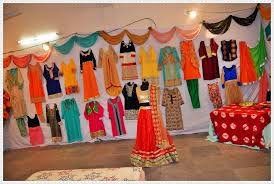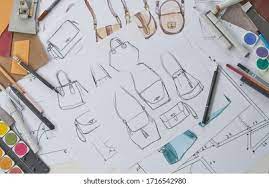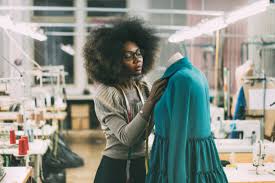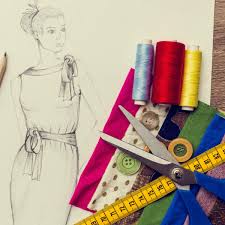Is Textile Designing and Fashion designing Same? Which is Better Fashion Design or Textile Design?
Textile Designing:
While textile designing and fashion designing share some similarities, they are not the same thing. Both fields involve the use of fabrics, materials, and colors, but the focus and scope of each field are different.
Textile Designing is the creation of patterns and designs for fabrics used in the production of various products such as apparel, home textiles, and accessories. Textile designers work on the design and development of different types of fabrics, which include woven, knitted, and printed fabrics. They use various techniques such as computer-aided design (CAD), hand painting, and digital printing to create patterns and designs for fabrics. The primary focus of textile designing is on the technical aspects of fabric design, such as selecting appropriate materials, determining the ideal weave structure, and ensuring that the final fabric meets the required quality standards.

On the other hand, Fashion Designing is the creation of designs for clothing, footwear, accessories, and other fashion products. Fashion designers work on the creation of the overall look and feel of a garment or product, including its shape, cut, style, and color. They focus on creating designs that are both aesthetically pleasing and functional, meeting the needs of the customer and the market. Fashion designers are responsible for developing seasonal collections, forecasting trends, and creating designs that appeal to the target audience.
Another key difference between textile designing and fashion designing is the scope of the work. Textile designers focus mainly on the design and development of fabrics, while fashion designers work on the design and creation of finished garments and accessories. Textile designers work with textile manufacturers, mills, and other producers of fabrics and textiles, while fashion designers work with apparel manufacturers, retailers, and wholesalers.

While both fields are distinct, they are also closely intertwined. Textile designers often work in collaboration with fashion designers to create fabrics that meet their specific design requirements. Fashion designers use textile designs to create unique and innovative garments, accessories, and home textiles. Textile design plays a crucial role in fashion design, as the choice of fabric can greatly affect the look, feel, and overall appeal of a product.
Which is Better Fashion Design or Textile Design?
Fashion design and textile design are two different fields of the fashion industry that require unique skills and expertise. Both of these fields have their own merits and drawbacks, and what is considered “better” largely depends on the individual’s personal interests, skills, and career aspirations. In this essay, I will delve into the differences between fashion design and textile design, their advantages and disadvantages, and explore which one could be considered “better” depending on the individual’s goals.
Fashion design involves creating clothing and accessories that are both functional and visually appealing. Fashion designers conceptualize and create designs, and often work with a team to bring their ideas to life. They must have an eye for style and aesthetics, as well as a solid understanding of garment construction, materials, and manufacturing processes. Fashion designers are responsible for the entire design process, from sketching and pattern-making to selecting materials and overseeing production.

Textile design, on the other hand, is the art of creating patterns and designs for fabrics. Textile designers create unique and original designs for fabrics used in clothing, accessories, and home décor. They use various techniques such as weaving, printing, and dyeing to create their designs. Textile designers are responsible for creating the patterns, colors, and textures that are used in a range of products.
Advantages of Fashion Design:
One of the primary advantages of fashion design is the opportunity for creative expression. Fashion designers get to create unique and innovative designs that reflect their personal style and creativity. They can use a variety of materials and techniques to bring their designs to life, and they have the chance to experiment with new styles and trends.
Another advantage of fashion design is the potential for fame and recognition. Successful fashion designers often become well-known celebrities, with their work being featured in magazines, on runways, and in stores. They may even get the chance to collaborate with high-profile clients and celebrities, further increasing their exposure and influence.
Disadvantages of Fashion Design:
One of the major disadvantages of fashion design is the competitive nature of the industry. There are many talented designers out there, and it can be challenging to stand out in a crowded field. Additionally, the fashion industry can be fickle and unpredictable, with trends changing rapidly and consumer demand fluctuating.
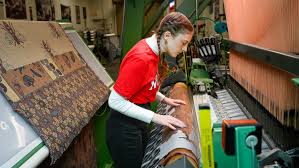
Another disadvantage of fashion design is the pressure to produce designs quickly and under tight deadlines. Fashion designers often work long hours, especially during peak seasons, to ensure that their collections are completed on time. This can be stressful and can take a toll on designers’ mental and physical health.
Advantages of Textile Design:
One of the primary advantages of textile design is the opportunity to work with a wide range of materials and techniques. Textile designers can experiment with different colors, patterns, and textures, and can work with a variety of fabrics such as cotton, silk, and wool. This allows for a great deal of creativity and artistic expression.
Another advantage of textile design is the potential for a more stable career. Textile designers can work for textile mills, manufacturers, or design studios, and can create designs for a range of industries, from fashion to home décor. This provides a diverse range of job opportunities, and can lead to a more stable and predictable career path.
Disadvantages of Textile Design:
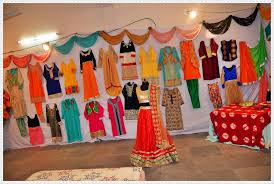
One of the major disadvantages of textile design is the lack of recognition and fame. Textile designers typically work behind the scenes, and their work may not be as visible or well-known as that of fashion designers. This can make it more challenging for textile designers to build a strong personal brand or gain recognition for their work.
Another disadvantage of textile design is the potential for monotony. While textile designers have a great deal of creative freedom, they may also be tasked with creating designs for repetitive and mundane products, such as towels or bed linens. This can make the work
Which is Better Fashion Design or Textile Design?
Fashion design and textile design are two different fields of the fashion industry that require unique skills and expertise. Both of these fields have their own merits and drawbacks, and what is considered “better” largely depends on the individual’s personal interests, skills, and career aspirations. In this essay, I will delve into the differences between fashion design and textile design, their advantages and disadvantages, and explore which one could be considered “better” depending on the individual’s goals.
Fashion design involves creating clothing and accessories that are both functional and visually appealing. Fashion designers conceptualize and create designs, and often work with a team to bring their ideas to life. They must have an eye for style and aesthetics, as well as a solid understanding of garment construction, materials, and manufacturing processes. Fashion designers are responsible for the entire design process, from sketching and pattern-making to selecting materials and overseeing production.

Textile design, on the other hand, is the art of creating patterns and designs for fabrics. Textile designers create unique and original designs for fabrics used in clothing, accessories, and home décor. They use various techniques such as weaving, printing, and dyeing to create their designs. Textile designers are responsible for creating the patterns, colors, and textures that are used in a range of products.
Advantages of Fashion Design:
One of the primary advantages of fashion design is the opportunity for creative expression. Fashion designers get to create unique and innovative designs that reflect their personal style and creativity. They can use a variety of materials and techniques to bring their designs to life, and they have the chance to experiment with new styles and trends.
Another advantage of fashion design is the potential for fame and recognition. Successful fashion designers often become well-known celebrities, with their work being featured in magazines, on runways, and in stores. They may even get the chance to collaborate with high-profile clients and celebrities, further increasing their exposure and influence.
Disadvantages of Fashion Design:
One of the major disadvantages of fashion design is the competitive nature of the industry. There are many talented designers out there, and it can be challenging to stand out in a crowded field. Additionally, the fashion industry can be fickle and unpredictable, with trends changing rapidly and consumer demand fluctuating.

Another disadvantage of fashion design is the pressure to produce designs quickly and under tight deadlines. Fashion designers often work long hours, especially during peak seasons, to ensure that their collections are completed on time. This can be stressful and can take a toll on designers’ mental and physical health.
Advantages of Textile Design:
One of the primary advantages of textile design is the opportunity to work with a wide range of materials and techniques. Textile designers can experiment with different colors, patterns, and textures, and can work with a variety of fabrics such as cotton, silk, and wool. This allows for a great deal of creativity and artistic expression.
Another advantage of textile design is the potential for a more stable career. Textile designers can work for textile mills, manufacturers, or design studios, and can create designs for a range of industries, from fashion to home décor. This provides a diverse range of job opportunities, and can lead to a more stable and predictable career path.
Disadvantages of Textile Design:
One of the major disadvantages of textile design is the lack of recognition and fame. Textile designers typically work behind the scenes, and their work may not be as visible or well-known as that of fashion designers. This can make it more challenging for textile designers to build a strong personal brand or gain recognition for their work.
Another disadvantage of textile design is the potential for monotony. While textile designers have a great deal of creative freedom, they may also be tasked with creating designs for repetitive and mundane products, such as towels or bed linens. This can make the work

